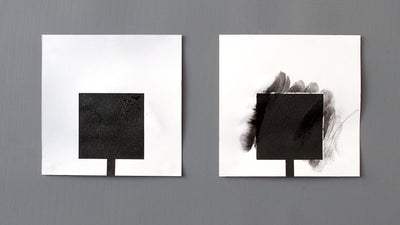Shield your electric guitar with Electric Paint

If you need to ground out your guitar and isolate it from any electrical noise, you can shield your electric guitar with our Electric Paint. The most reliable method is by using copper tape or copper foil, but these two materials can be quite costly and cumbersome to apply. Instead, you can try shielding your guitar with Electric Paint first.
Please note that every guitar is different and we cannot guarantee that this method will work. Also, opening your guitar might void any guarantee you have with the manufacturer or seller of your guitar. Electric Paint wouldn't damage your guitar, so even if it doesn't work, you can still try other methods to shield your guitar.
We love it when you share your projects! Post your project on Instagram, YouTube, or Twitter, and make sure to tag @bareconductive or use #bareconductive. You can also send your videos and photos to info@bareconductive.com so we can post them on our site for the world to see.
Background
A common phenomenon with single coil electric guitars is a humming sound, which is due to electromagnetic interference, caused by all sorts of electric equipment, such as amplifiers, microphones, cables and batteries. Simply by connecting your guitar to a guitar amp can cause this noise. One way to reduce the interference is by shielding your guitar and creating a Faraday cage, which is a conductive encasing that shields its contents from an electric or magnetic field.
Instructions
Open your guitar
To begin, take pictures of your guitar, so you remember how to reassemble it later. Then, carefully open your guitar. In our case, we had to open it with a screwdriver. Remove the pickguard and pickups and lay them to the side, there is no need to detach the wires anywhere but keep in mind that you may get some Electric Paint on them.

Apply Electric Paint
With your guitar open, apply the conductive paint with a brush to the insides of the guitar, covering the guitar cavity and pickup cavity. Make sure to get an even application as well painting any of the connections within the guitar, this will improve the conductivity of the paint. Let the paint dry for at least 15 minutes.

Test
Once the shielding paint has dried, test the paint with a multimeter. Set the multimeter to measure resistance and hold the two test nodes across different parts of the paint. If you're getting a reading, then your paint has dried, is evenly applied and you have shielded your guitar. Assemble the guitar together again and you're ready to go!

Next Steps
If the noise hasn't reduced enough, you might now want to further improve your shielding. In these cases, we would recommend using aluminium foil or copper foil and apply a layer of foil over the paint.







